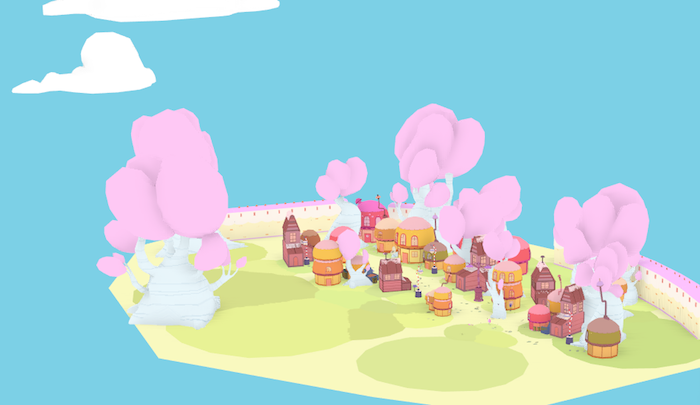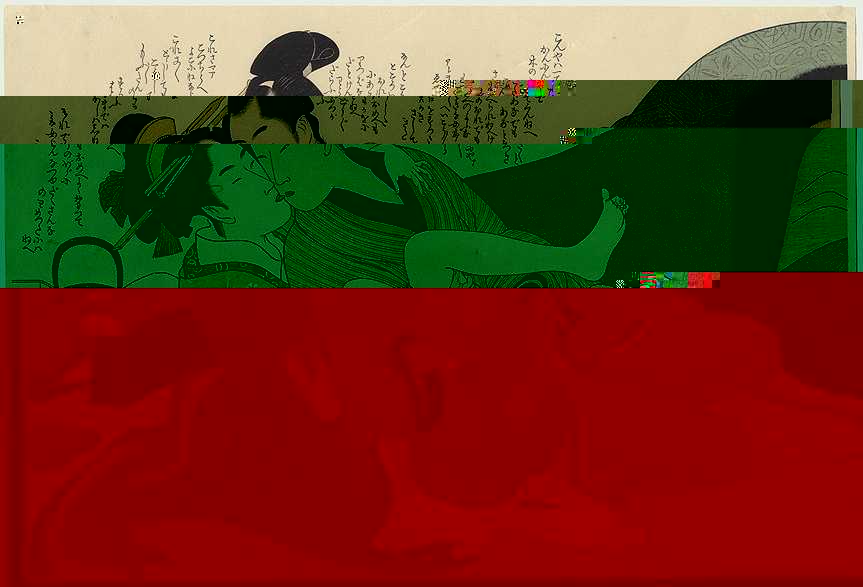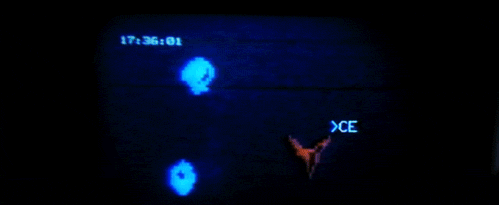Datamoshing the Land of Ooo: An Interview with David OReilly

Screenshot of work in progress, David OReilly, “A Glitch is a Glitch” (2013). Episode of the television series Adventure Time.
David OReilly is a 3D animator’s 3D animator. Embracing a stripped-back aesthetic that foregrounds the very processes of animation, OReilly—whose past short films include award-winning titles “The External World” (2011) and “Please Say Something” (2009)—is recognized as much for his astute grasp of dark, abstract comedy as for his unique approach to visual design. Drawing on glitch aesthetics, underground Japanese Manga and the most parasitic of Internet memes, OReilly forges original compositions from the debris of contemporary culture.
On April 1, Cartoon Network aired an episode of primetime television series Adventure Time that was written and directed by OReilly. Entitled “A Glitch is a Glitch,”[1] the episode tells the story of a villain who creates a computer virus to delete all of the other characters in the show, with the exception of his love interest. The other characters must weed out and destroy this glitch in the system.
“A Glitch is a Glitch” arrived a couple of weeks before a new ‘viral’ trailer for Superman reboot Man of Steel, which also used glitchy datamoshing techniques to deliver its message. It seems significant that as glitch aesthetics take root in the Hollywood mainstream, a young animator, who has creatively embraced glitches for years, would make a television cartoon devoted to weeding them out.

Screenshot of work in progress, David OReilly, “A Glitch is a Glitch” (2013). Episode of the television series Adventure Time.
DR: How did you become involved with Adventure Time?
DO: Pen (the creator of the show) was a fan of my short films and got in touch in early 2010. At the time I was making The External World and wasn’t able to jump ship, so it was put on hold. About a year later I had moved to LA and we ran into each other a few times and started talking about it again.
DR: At what stage did the music producer Flying Lotus (Steven Ellison) become involved with the project?
DO: Steve is a friend and knew I was doing this early on. We were originally planning on doing a completely different intro that he would score, so he sent over some tracks during production. In the end we didn’t have time or money to do that intro, so the end credits sequence was born.
DR: Were there any restrictions and/or stipulations on what you could do with the show?
DO: Creatively, Pen really wanted me to do my own thing. The writers on the show are really good, and I would have been happy to animate one of their storyboards—but he really wanted me to do all that stuff myself. I can’t think of a precedent for that. It may be the only animated show in history to let a total outsider write and direct an episode. As far as restrictions, there were a few because ultimately it’s for children’s TV. A few jokes were cut or toned down, which was frustrating at the time, but I’m proud of what made it to air.
Artifacts: A Conversation Between Hito Steyerl and Daniel Rourke

“But even if the internet is dead this doesnt mean it’s over. It is all over.”
When we met recently we talked about the glitch as it relates to contemporary image culture, but we also talked about the glitch as something to aspire to. In your essay, A Thing Like You and Me, you retell Walter Benjamin’s parable of the Angel of History, pushed by the harsh winds of progress away from the rubble of history, its back facing into the unknown future. You say that we are the rubble, or at least, that we should align ourselves with the rubble. I’m fascinated by these allusions to excess and detritus in your writing, and I see something of the glitch aesthetic making its way into your video works. I thought we could start from these bruises and cracks; from the things we can’t predict, control or maintain. How would you relate the glitch to Benjamin’s rubble?
One of the biggest misunderstandings about digital information is that it is replicated identically, without loss or transformation. But anyone who works with such information knows that digital practice is constituted – like perhaps any technology – by malfunction. One has to constantly convert information in order to work with it across different platforms and softwares and on the way it is reformatted, translated, compressed or sometimes even blown up, it is enhanced or diminished: it changes. It changes its format or container or outlook or context.
Digital information is thus characterised by transformation, degradation, circulation, but also by its surprising ability to mutate and produce unpredictable results. The glitch, the bruise of the image or sound testifies to its being worked with and working; being passed on and circulated, being matter in action. History inscribes itself into the image in forms of bruises and scars. In their 1958 essay “Les Statues meurent aussi” Chris Marker and Alain Resnais write that the forces of heaven and earth are getting caught up in the scars of African statues. But all imaginable forces – aesthetic, political, technological, affective, social – are expressed by the scars of the digital image or sound. It condenses the tensions and contestations that constitute the image/sound and rip it open.
An Object Oriented Glitch Ontology?
I took a trip to Chicago for GLI.TC/H 2112! – A conference/festival/carnival/movement in honour (and despite) of hardware/software/wetware errors, databends and feedback blackholes.
 I took a ton of photographs, you can view them on Flickr (better quality) or Facebook (dotted with comments, insights and exultations from the GLI.TC/H community).
I took a ton of photographs, you can view them on Flickr (better quality) or Facebook (dotted with comments, insights and exultations from the GLI.TC/H community).
I intend to write more about the event, but for now you can see the talk at Vimeo (high quality, but tiny break in middle) or uStream (bad quality), which I gave on Saturday 8th December. It’s title is Glitches in Things and the “Friendly Medium”, a talk expanding on an idea I have been carting around for a couple of years now. Updated with Object Oriented insights I hope it acts as a mental toolkit for artists looking to dance with objects, in all their glitchy splendour. As usual, I completely ignored my notes whilst talking, for this reason it’s worth listening to the question and answer bit afterwards (also, there is a slight break about halfway through. Ooops)
Infinite thanks must go to Rosa Menkman, Jon Satrom and Nick Briz – the GLI.TC/H Bots at the heart of the fest. Thank you for inviting me to participate.
More on OOO, glitches, kipple and Things to come reeeeal soon…
You can see/download the powerpoint presentation that goes along with this talk here.
Abject Materialities: An Ontology of Everything on the Face of the Earth
If a cell gets out it could imitate everything on the face of the Earth…and it’s not gonna stop!!!
On the 5th of October I took part in the ASAP/4 ‘Genres of the Present’ Conference at the Royal College of Art. In collusion with Zara Dinnen, Rob Gallagher and Simon Clark, I delivered a paper on The Thing, as part of a panel on contemporary ‘Figures’. Our idea was to perform the exhaustion of the Zombie as a contemporary trope, and then suggest some alternative figures that might usefully replace it. Our nod to the ‘Figure’ was inspired, in part, by this etymological diversion from Bruno Latour’s book, On the Modern Cult of the Factish Gods:
To designate the aberration of the coastal Guinea Blacks, and to cover up their own misunderstanding, the Portuguese (very Catholic, explorers, conquerors, and to a certain extent slave traders as well) are thought to have used the adjective feitiço, from feito, the past participle of the Portuguese verb “to do, to make.” As a noun, it means form, figure, configuration, but as an adjective, artificial, fabricated, factitious and finally, enchanted. Right from the start, the word’s etymology refused, like the Blacks, to choose between what is shaped by work and what is artificial; this refusal, this hesitation, induced fascination and brought on spells. (pg. 6)

My paper is a short ‘work-in-progress’, and will eventually make-up a portion of my thesis. It contains elements of words I have splurged here before. The paper is on, or about, The Thing, using the fictional figure as a way to explore possible contradictions inherent in (post)human ontology. This synopsis might clarify/muddy things up further:
Coiled up as DNA or proliferating through digital communication networks, nucleotides and electrical on/off signals figure each other in a coding metaphor with no origin. Tracing the evolution of The Thing over its 70 year history in science-fiction (including John W. Campbell’s 1938 novella and John Carpenter’s 1982 film), this paper explores this figure’s most terrifying, absolute other quality: the inability of its matter to err. The Thing re-constitutes the contemporary information paradigm, leaving us with/as an Earthly nature that was always already posthuman.
You can read the paper here, or download a PDF, print it out, and pin it up at your next horror/sci-fi/philosophy convention.
If you are interested in reading more on The Thing, check out Anne Billson’s blog, listen to Peter Watts award winning short story homage, The Things, or alternatively, wallow in my archives a bit longer…
Sampling, Acclimatisation, and the ‘Die Hard’ Method
The 5th Mercy Podcast for Liverpool Biennial, 2012 is a work written, performed and edited by wondrous poet Holly Pester and myself (Daniel Rourke)
Featuring Original Work by:
George Major : http://www.georgemajor.com
Claire Potter : http://clairelouisepotter.blogspot.co.uk
Featuring Audio Samples From:
Bo Didley, I’m a Man
The Yardbirds, I’m a man
Jacques Dutronc, La Fille Du Père Noël
Davie Bowie, The Jean Genie
The Winstons, Amen, Brother
Danger Mouse, Interlude
Die Hard Original Soundtrack (inc. Let it Snow, by Dean Martin)
Conference Panel: How to Survive in a Post-Zombie Digital Landscape
ASAP/4: Genres of the Present Conference, Royal College of Art, ‘Abject Materialities (an Ontology of Every Thing on the Face of the Earth)’ as part of panel, ‘Figuring Genre in Contemporary Culture: How to Survive in a Post-Zombie Digital Landscape’, with Zara Dinnen, Rob Gallagher and Simon Clark, October 4th-6th 2012
Kipple and Things II: The Subject of Digital Detritus
This text is a work in progress; a segment ripped from my thesis. To better ingest some of the ideas here, you might want to read these texts first:
– Kipple and Things: How to Hoard and Why Not To Mean
– Digital Autonomy
 Captured in celluloid under the title Blade Runner, (Scott 1982) Philip K. Dick’s vision of kipple abounds in a world where mankind lives alongside shimmering, partly superior, artificial humans. The limited lifespan built into the Nexus 6 replicants [1] is echoed in the human character J.F. Sebastian, [2] whose own degenerative disorder lends his body a kipple-like quality, even if the mind it enables sparkles so finely. This association with replication and its apparent failure chimes for both the commodity fetish and an appeal to digitisation. In Walter Benjamin’s The Work of Art in the Age of its Technological Reproducibility, mechanisation and mass production begin at the ‘original’, and work to distance the commodity from the form captured by each iteration. Not only does the aura of the original stay intact as copies of it are reproduced on the production line, that aura is actually heightened in the system of commoditisation. [3] Commodities operate through the binary logic of fetishisation and obsolescence, in which the subject’s desire to obtain the shiny new object promotes the propagation of its form through an endless cycle of kippleisation. As Frederic Jameson has noted, Dick’s work ‘renders our present historical by turning it into the past of a fantasized future’ (Jameson, 2005, p. 345). Kipple piles up at the periphery of our culture, as if Dick is teasing us to look upon our own time from a future anterior in which commodity reification will have been:
Captured in celluloid under the title Blade Runner, (Scott 1982) Philip K. Dick’s vision of kipple abounds in a world where mankind lives alongside shimmering, partly superior, artificial humans. The limited lifespan built into the Nexus 6 replicants [1] is echoed in the human character J.F. Sebastian, [2] whose own degenerative disorder lends his body a kipple-like quality, even if the mind it enables sparkles so finely. This association with replication and its apparent failure chimes for both the commodity fetish and an appeal to digitisation. In Walter Benjamin’s The Work of Art in the Age of its Technological Reproducibility, mechanisation and mass production begin at the ‘original’, and work to distance the commodity from the form captured by each iteration. Not only does the aura of the original stay intact as copies of it are reproduced on the production line, that aura is actually heightened in the system of commoditisation. [3] Commodities operate through the binary logic of fetishisation and obsolescence, in which the subject’s desire to obtain the shiny new object promotes the propagation of its form through an endless cycle of kippleisation. As Frederic Jameson has noted, Dick’s work ‘renders our present historical by turning it into the past of a fantasized future’ (Jameson, 2005, p. 345). Kipple piles up at the periphery of our culture, as if Dick is teasing us to look upon our own time from a future anterior in which commodity reification will have been:
It hadn’t upset him that much, seeing the half-abandoned gardens and fully abandoned equipment, the great heaps of rotting supplies. He knew from the edu-tapes that the frontier was always like that, even on Earth. (Dick 2011, 143)
Kipple figures the era of the commodity [4] as an Empire, its borders slowly expanding away from subjects sustained by Biltong replicas, seeded with mistakes. Kipple is a death of subjects, haunted by nostalgically perfect objects, because ‘this entropy [has] a far side in resurrection itself:’ (Jameson, 2005, p. 82)
[H]e saw the dust and the ruin of the apartment as it lay spreading out everywhere – he heard the kipple coming, the final disorder of all forms, the absence which would win out. It grew around him as he stood holding the empty ceramic cup; the cupboard of the kitchen creaked and split and he felt the floor beneath his feet give… In the depression caused by the sagging of the floor, pieces of animals manifested themselves, the head of a crow, mummified hands which might have once been parts of monkeys. (Dick, 1968, p. 197)
Kipple is a renewal for matter, even as it is a death for form. Qualify the human subject with the android built in its image; the object with the entropic degradation that it must endure if its materiality is to be perpetuated, and you necessarily approach an ontology of decay, junk and detritus. This future anterior is a frontier, one from which it might just be possible to look back upon the human without nostalgia; a revisal of the relationship we have with ourselves as things of entropic, degrading, erroneous matter. [5] Kipple is an entropy of forms, and kippleisation an endless, unstoppable encounter between subjectness and thingness.